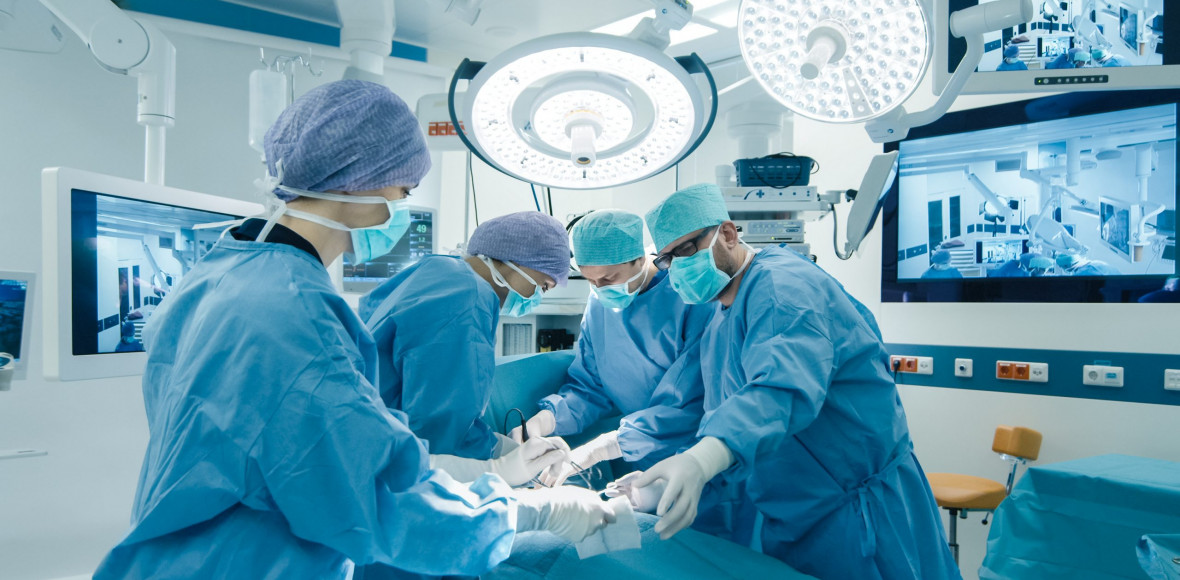Airborne Infection in the OR
Published
Preventing Surgical Site Infections in the Operating Room
A few years back, in an operating theatre at a Japanese hospital, two physicians and two nurses donned gowns and gloves and prepared for a total knee replacement surgery. As the surgical team readied the instrument table and wrapped the patient’s leg, a highly sensitive camera filmed the action — not the team’s performance but rather the whirl of airborne particles stirred up by their movements and illuminated by a green laser.
Nobody’s knee was actually replaced in that room. The procedure was a simulation, designed to determine which movements spawn the most airborne particles which cause airborne infection in the operating theatre (OT) and where in the room these particles congregate.
Preventing Airborne Infection in the Operating Theatre
These are vital concerns. Airborne particles — dust, bandage fibers, skin scales, respiratory aerosols — can transport dangerous bacteria onto a surgeon’s gloves or scalpel or directly into an open wound, triggering serious infection.
Surgical site infections (SSI), the costliest and most feared of all healthcare acquired infections, plague hospitals worldwide. In low-income countries, over 10% of surgical patients become infected; in some regions a C-section or GI surgery might carry an infection risk of 19% or 23%. Even in wealthy countries, 2% to 4% of surgical patients develop infection; in emergency trauma surgery, that risk may rise to 15%.
Treatment for SSI can require a lengthy hospital stay and complex revision surgery. In the United States, surgical site infections are associated with nearly 1 million additional inpatient days, and 3% of surgical site infections turn lethal. In Africa, the death rate is nearly 10%.
Mortality rates are highest among patients infected with drug-resistant bacteria, such as Methicillin-resistant Staphylococcus aureus (MRSA), a common scenario and grave concern in the superbug era.
Even when hospitals take extreme care to disinfect wounds, sterilize devices, and clean the operating theatre, infections can take root. That’s because in most SSI cases — perhaps 80% to 90% — infections are triggered by pathogens that descended from the air.
“Contamination by airborne microorganisms plays a central role in the pathogenesis of surgical site infections,” asserts Dominique Chauveaux, a French orthopedic surgeon, who urges hospitals to make SSI prevention a “major priority.”
U.S. surgeons, writing in the American Journal of Infection Control, consider bacterial contamination of OT air “an underappreciated factor” in the origin of prosthetic joint infections.
Air Quality Deserves Close Attention
How do airborne pathogens infiltrate the operating theatre despite high disinfection standards and use of HEPA filters? Most important, how can the particle count be reduced?
The Japanese knee-replacement simulation offered some insight. Even the smallest movements — removing a glove, cutting a bandage, lifting a patient’s leg — can unleash an abundance of particles. When a surgical team files into the operating theatre, another study found, the particles stirred up by their shoes and gown hems drift to the level of the operating table.
Certainly, moving less, talking less, and limiting OT personnel can minimize air contamination. Still, measures like these aren’t enough. Neither are ventilation and air-filtration systems.
As U.S. surgeons point out, traditional precautions “have thus far resulted in failure to reduce the risk of microbial aerosols or contamination of implantable devices during arthroplasty surgery.”
Given the prevalence and virulence of surgical site infections, the surgeons argue, hospitals must augment traditional precautions with “innovative air purification technologies.”
A clean, quiet operating theatre and skilled surgical staff can do much to protect a patient from infection. Air disinfection technology that inactivates pathogens at the DNA level can amplify that protection considerably.
Prosthetic Joint Infections: “Particularly devastating”
Appendectomy, abdominal hysterectomy, craniotomy, coronary bypass — all surgical procedures carry a risk of infection. However, prosthetic joint infections are “particularly devastating,” as Japanese scientists observe. Reducing these infections is both urgent and challenging.
“Since fighting infections depends on blood flow (which artificial implants obviously don’t have), both for an effective immune system response and to deliver antibiotics to the area, joint replacements can become safe havens for bacteria,” explains Jonathan Cluett, M.D., an American orthopedic surgeon.
What’s more, as the global population ages and obesity rates rise, hip and knee replacements will become increasingly common. Experts project a 13% increase in joint replacements and a 14% increase in resulting infections by 2030. A single infection can cost over $400,000. The death rate in these cases is an estimated 2% to 7%.
“A periprosthetic joint infection can be as medically challenging to the patient as having cancer,” says Jeremy M. Gililland, M.D., a American orthopedic surgeon. Though the infection risk is 2% for a low-risk patient, “if that patient gets an infection, it is 100% detrimental to them.”
In many cases, the surgeon must remove the infected implant, cleanse the joint cavity, and implant a temporary joint spacer that is removed after 6 weeks of IV antibiotic treatment. About 10% of all arthroplasties are revisions. For these surgeries, the infection risk rises to 15% to 20%.
It’s not just joint replacements that often require re-operation after infection. In a British study, for example, 8% of neurosurgery patients became infected, and 9 out of the 20 infected patients required reoperation.
Read part 2 of this blog post here.
